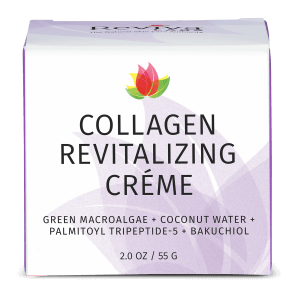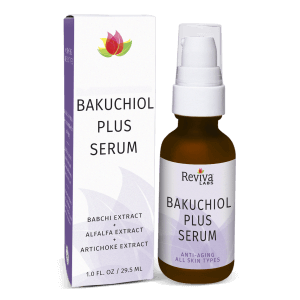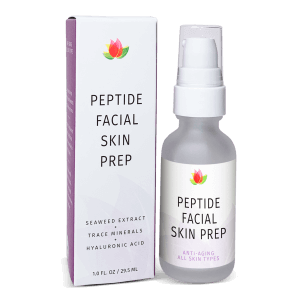Natural, Reviva Labs, Skin Care
How To Improve Skin Texture
Improving skin texture is a common concern for many people. Skin texture refers to the physical surface condition of the skin. Ideally, it’s smooth, soft, and evenly toned, but various factors can cause the skin to become rough, uneven, or bumpy. This post will explore textured skin, its causes, and effective ingredients and practices for improving skin texture.
Understanding Textured Skin
Textured skin can manifest in various ways, including dryness, oiliness, acne, and aging signs like fine lines and wrinkles. It may feel uneven to the touch, appear dull, or show visible pores. Textured skin often results from a combination of internal factors like genetics and hormones, and external factors like environmental exposure and lifestyle choices.
The skin’s texture is primarily determined by its outermost layer, the epidermis. When the skin is healthy, it sheds dead skin cells and generates new ones in a balanced manner. However, when this process is disrupted, it can lead to texture irregularities. For instance, excessive buildup of dead skin cells can make the skin feel rough or look dull.
Causes of Textured Skin
Several factors contribute to textured skin. Genetics play a role, but lifestyle and environmental factors are often significant contributors. Sun exposure, for instance, can cause damage over time, leading to roughness and premature aging. Pollution and other environmental stressors can also harm the skin’s barrier function, leading to texture changes.
Diet and hydration levels influence skin health. A diet lacking in essential nutrients and insufficient water intake can leave the skin looking lackluster and feeling rough. Additionally, certain skincare practices, or the lack thereof, can impact skin texture. Over-exfoliation, using harsh products, or neglecting to moisturize can disrupt the skin’s natural balance, leading to textural issues.
Some medical conditions can contribute to an uneven skin texture
Hyperkeratosis or Retention Keratosis
Hyperkeratosis, often referred to as Retention Keratosis, is a skin condition characterized by the thickening of the stratum corneum, the outermost layer of the skin. This thickening occurs due to an excessive accumulation of keratin, a protective protein found in the skin. The condition can present in various forms, including calluses and corns, which are often due to repeated friction or pressure on specific skin areas. Another common form is actinic keratosis, caused by prolonged sun exposure and potentially leading to skin cancer if untreated. Hyperkeratosis can also manifest as a symptom of other skin disorders like psoriasis or eczema. Treatment typically involves topical creams containing exfoliating agents like salicylic acid or urea, which help to soften and remove the excess keratin. In more severe cases, a healthcare provider may recommend procedures like cryotherapy or laser therapy.
Sebaceous Hyperplasia
Sebaceous hyperplasia is a benign condition involving the enlargement of sebaceous glands, which are the oil-producing glands in the skin. This condition typically appears as small, flesh-colored, or yellowish bumps on the skin, often on the face, particularly the forehead, cheeks, and nose. Sebaceous hyperplasia is more common in middle-aged and older adults and can be mistaken for acne. The bumps or lesions associated with this condition are usually painless and do not pose any significant health risk. However, some individuals may seek treatment for cosmetic reasons. Treatment options include laser therapy, cryotherapy, and cauterization. Topical retinoids may also be prescribed to help reduce the size of the lesions and improve the skin’s appearance. It’s important to distinguish sebaceous hyperplasia from other skin conditions, so a professional diagnosis is recommended.
Comedones
Comedones are a primary feature of acne, representing the earliest stage of an acne lesion. They are essentially skin-colored, small bumps frequently found on the forehead and chin. Comedones arise when the opening of a hair follicle becomes clogged with sebum, dead skin cells, and sometimes bacteria. There are two types of comedones: open and closed. Open comedones, commonly known as blackheads, have a wider opening at the skin’s surface, exposing the contents to air, which leads to oxidation and darkening. Closed comedones, or whiteheads, have a smaller opening and remain covered by skin, keeping the contents trapped. Treatment for comedones usually involves topical products that help to unclog pores, such as salicylic acid, benzoyl peroxide, and retinoids. Regular exfoliation and maintaining a consistent skincare routine are also effective ways to prevent and manage comedones.
Milia
Milia are small, white, hard cysts that form on the skin. They are typically about 1-2 millimeters in diameter and are most found around the eyes, nose, and cheeks, though they can appear anywhere on the body. Milia occurs when keratin becomes trapped beneath the surface of the skin, forming tiny cysts. They are common in all age groups and can develop spontaneously. Milia is also seen in newborns but usually disappear on their own. In adults, they can be caused by skin damage (like sunburn or blistering), use of heavy skincare products, or because of certain skin conditions. Milia is generally harmless and do not require treatment, as they can resolve spontaneously. However, if they persist or are a cosmetic concern, treatments like topical retinoids, chemical peels, or manual extraction by a dermatologist can be effective. It is important not to try to remove them at home to avoid skin damage or infection.
Ingredients to Improve Textured Skin
To improve skin texture, consider incorporating certain key ingredients into your skincare routine:
- Hydrating Agents: Ingredients like hyaluronic acid and glycerin attract moisture to the skin, helping to plump it up and smooth out fine lines.
- Exfoliants: Alpha hydroxy acids (AHAs) and beta hydroxy acids (BHAs) are excellent for exfoliating the skin. AHAs, like glycolic and lactic acid, are water-soluble and help remove the surface layer of dead skin cells. BHAs, like salicylic acid, are oil-soluble and can penetrate deeper into the pores, helping to clear out excess oil and prevent acne.
- Antioxidants: Vitamin C and Vitamin E are potent antioxidants that protect the skin from environmental damage and can improve skin texture by promoting collagen production.
- Retinoids: Retinol and other retinoids are known for their ability to accelerate cell turnover, improve skin texture, and reduce the appearance of fine lines and wrinkles.
- Ceramides and Peptides: These ingredients help strengthen the skin’s barrier function, improving hydration and texture.
Skincare Routines for Textured Skin
A consistent skincare routine tailored to your skin type can make a significant difference in improving skin texture. Here’s a basic routine:
- Cleansing: Use a gentle cleanser to remove dirt and excess oil without stripping the skin.
- Exfoliating: Regular exfoliation, either physical or chemical, helps remove dead skin cells. However, it’s crucial not to overdo it, as this can lead to irritation.
- Toning: A good toner can balance the skin’s pH and prepare it for the absorption of other products.
- Serums and Treatments: Apply serums or treatments containing active ingredients like retinol, vitamin C, or hyaluronic acid.
- Moisturizing: A quality moisturizer helps lock in hydration and protect the skin barrier.
- Sun Protection: Daily sunscreen application is essential to protect the skin from UV damage.
Lifestyle Tips for Healthy Skin
In addition to a skincare routine, lifestyle changes can also improve skin texture:
- Hydration: Drinking plenty of water is essential for maintaining healthy skin.
- Diet: A balanced diet rich in fruits, vegetables, lean proteins, and healthy fats can promote skin health.
- Sleep: Quality sleep is crucial for skin repair and regeneration.
- Stress Management: High stress levels can negatively impact the skin, so finding ways to manage stress is important.
- Avoid Smoking and Limit Alcohol: Both smoking and excessive alcohol consumption can adversely affect skin health.
Consistency and Multifaceted Treatment Can Improve Skin Texture
Improving skin texture is a multifaceted approach that involves a combination of effective skincare products, healthy lifestyle choices, and understanding the needs of your skin. By incorporating the right ingredients into your skincare routine and making mindful lifestyle changes, you can achieve smoother, healthier-looking skin. Remember that patience and consistency are key, as skin texture improvements take time. Consulting with a dermatologist or skincare professional is highly recommended, especially if you have persistent skin concerns or conditions like acne, hyperpigmentation, or excessive dryness. A professional can provide personalized advice and treatments tailored to your specific skin type and concerns. Additionally, staying informed about the latest skincare research and trends can be beneficial, but it’s crucial to approach new products and routines with caution. Overloading your skin with too many products or ingredients can lead to irritation and further skin texture issues.
Furthermore, it’s important to acknowledge the role of internal health in skin texture. Factors like stress, sleep quality, and diet all significantly impact skin health. Managing stress through techniques like meditation, yoga, or regular exercise can promote better skin. Adequate sleep is vital for the skin’s repair and regeneration processes, and a balanced diet rich in antioxidants, vitamins, and minerals supports skin health from the inside out.
Lastly, protecting your skin from environmental damage, particularly UV radiation, is essential. Daily use of a broad-spectrum sunscreen can prevent premature aging and maintain skin texture. Incorporating these practices into your daily routine will not only improve the texture of your skin but also contribute to its overall health and resilience. Remember, the journey to improved skin texture is a gradual one, and nurturing your skin is a form of self-care that pays off in the long term.












